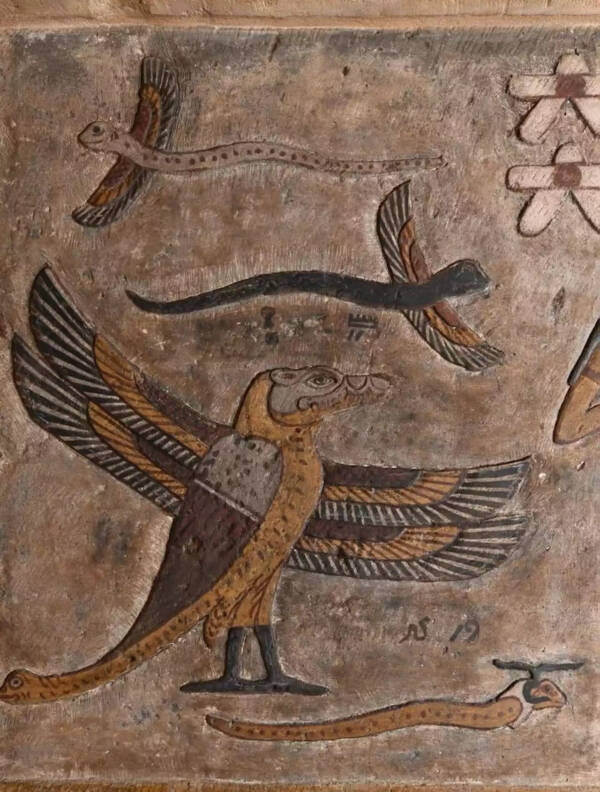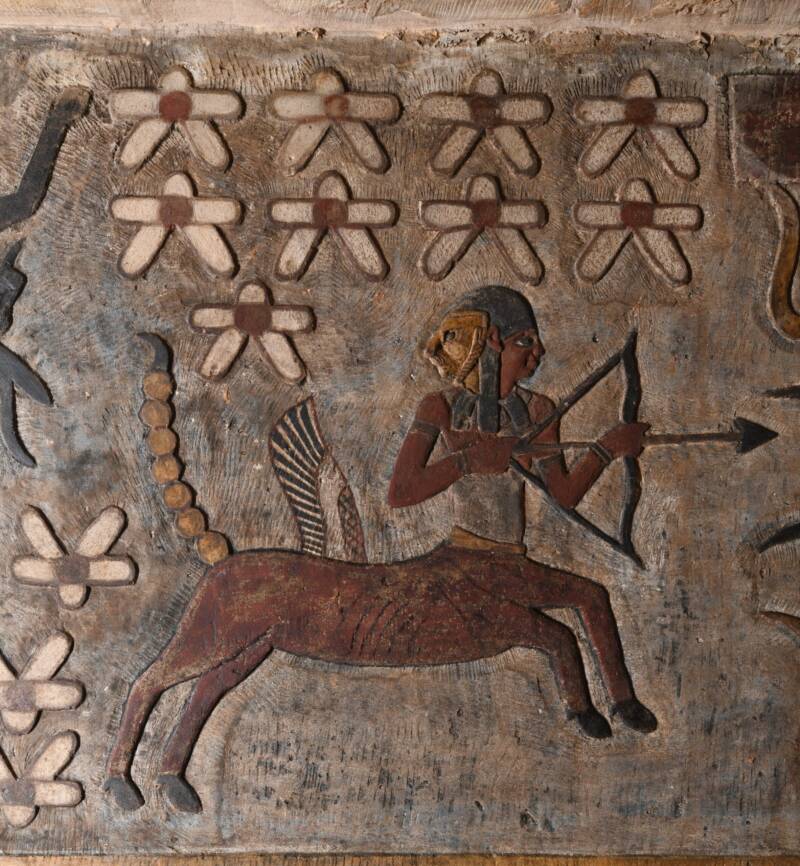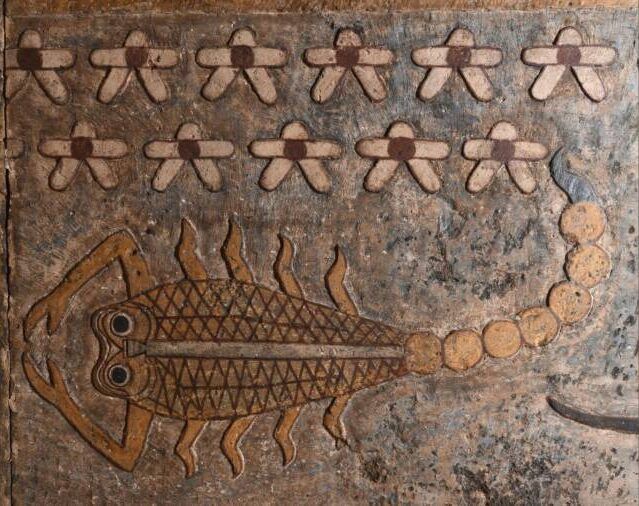A restoration team discovered this rare depiction of the complete Egyptian zodiac while sifting through grime covering the walls and ceiling of the Temple of Esna in Upper Egypt.

Ahmed Emam/Ministry of Tourism and AntiquitiesRestored zodiac painting depicting the decans, zodiac signs used to measure the twelve hours of the night.
Located about 36 miles south of Luxor, the Temple of Esna was an important place of worship for ancient Egyptians built to honor Khnum, the ram-headed god of fertility. Recently, archaeologists sifting through centuries of grime on the temple walls uncovered a number of intricate reliefs painted and chiseled by ancient artists.
Now, researchers have just made another remarkable discovery: a series of reliefs depicting the Egyptian zodiac painted on the temple’s ceiling.
After clearing away 2,000 years’ worth of dirt and animal droppings, researchers were able to see a complete representation of the signs of the zodiac, as well as planets like Jupiter, Saturn, and Mars and constellations that ancient Egyptians used to measure time. Additional art in the temple featured animals like crocodiles, snakes, and hybrid creatures.
On previous excavations, researchers identified several frescos depicting Khnum with his consorts Menhit and Nebtu, their son, Heka, and Neith, the goddess of war and wisdom. But it wasn’t until recently that they realized they were also sitting on a treasure trove of Egyptian zodiac paintings.

Ahmed Emam/Ministry of Tourism and AntiquitiesDepiction of winged snakes and a hybrid animal with a bird body and a crocodile head.
Following the discovery, a restoration team led by Ahmed Emam of Egypt’s Ministry of Tourism and Antiquities cleaned and recolored the images to restore them to their full glory. Now, researchers are hoping to get more information about the Egyptian zodiac, as it’s not yet clear how zodiac imagery came to the region in the first place.
“The zodiac itself is part of Babylonian astronomy and does not appear in Egypt until Ptolemaic times,” Christian Leitz, an Egyptology professor at the University of Tübingen in Germany, told Live Science.
The Ptolemaic Kingdom was an ancient Greek state that included Egypt and surrounding areas. Founded in 305 BC by Ptolemy I Soter, a general of Alexander the Great, the Ptolemaic Kingdom spanned almost 300 years and brought significant Greek influence to Egypt. It is possible that ancient Greeks introduced the zodiac to Egypt.
Regardless of its origin, the zodiac became immensely popular in Egypt after its introduction.
“The zodiac was used to decorate private tombs and sarcophagi and was of great importance in astrological texts, such as horoscopes found inscribed on pottery sherds,” Daniel von Recklinghausen, a researcher at the University of Tübingen, told Live Science.
But according to Leitz, examples of the zodiac in temples are harder to come by.
“It is rare in temple decoration,” Leitz said in a press release. “Apart from Esna, there are only two completely preserved versions left, both from Dendera.”
Located roughly two miles from Dendera, Egypt, Dendera Temple is one the best-preserved temples in the country and contained the Denderah zodiac, a relief depicting images of Taurus and Libra. The Esna zodiac is the only complete depiction of the zodiac signs uncovered in Egypt since the Dendereah discovery.
Currently, the team is in the process of analyzing the restored Esna paintings, and hopes to develop a greater understanding of the significance of the zodiac in ancient Egypt.
For modern horoscope enthusiasts, researchers have great news: You would most likely recognize many of the zodiac signs in the Temple of Esna.
“There is no difference [between modern and ancient Egyptian zodiacs] apart from some depictions of the signs,” Leitz confirmed to Live Science.

Ahmed Emam/Ministry of Tourism and AntiquitiesPainting of the zodiac Sagittarius at the Temple of Esna.

Ahmed Emam/Ministry of Tourism and AntiquitiesA painting depicting the Scorpio zodiac.
With scant zodiac artifacts, historians are hopeful that the discovery in the Temple of Esna will lead to more information about how ancient Egyptians understood the zodiac and their gods.
After reading about the discovery of zodiac paintings in Egypt’s Temple of Esna, discover how the Great Pyramids were built. Then, read 44 ancient Egypt facts that separate myth from fact.





